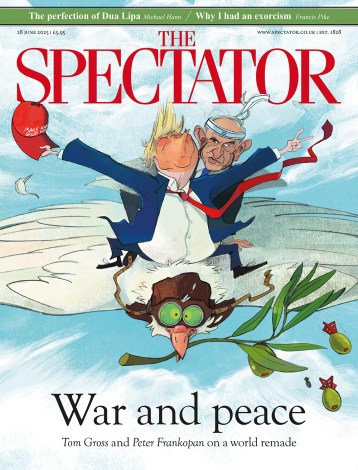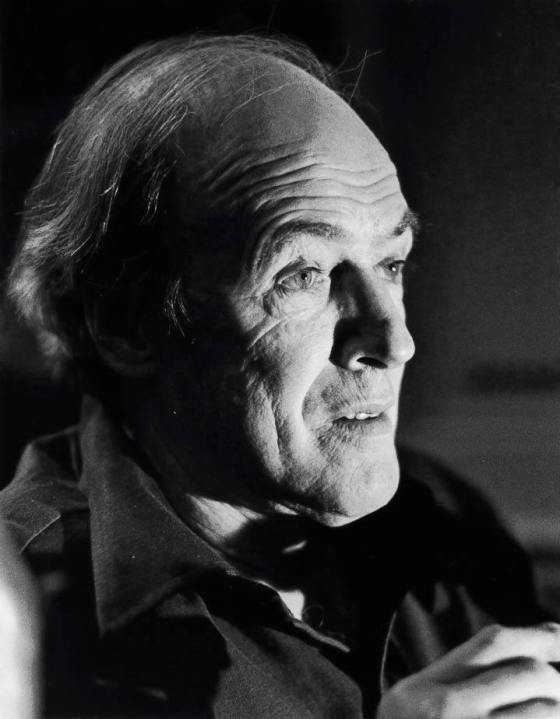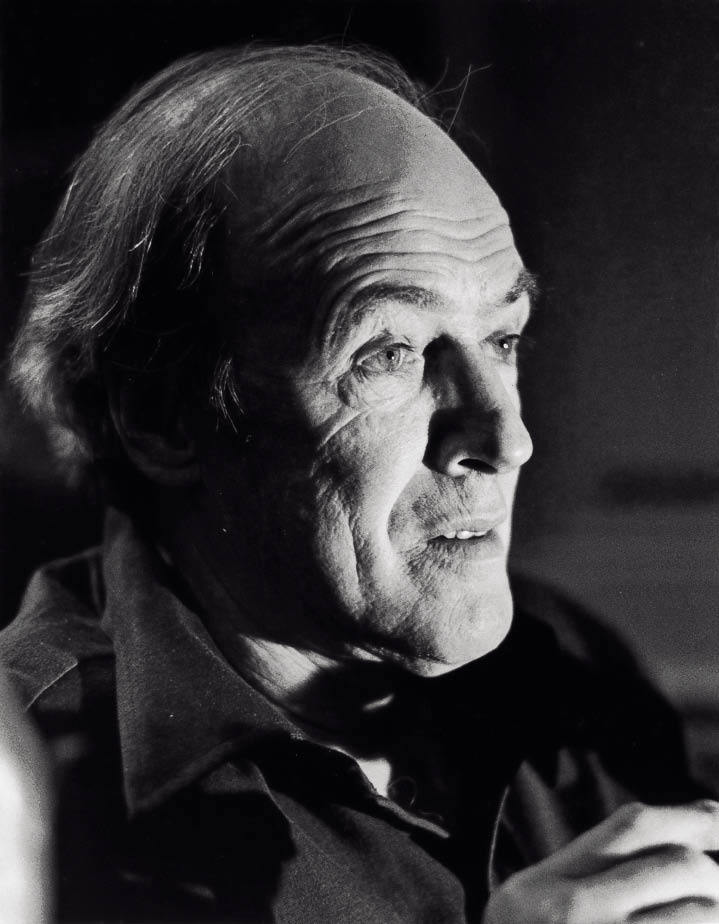Some of us are still startled that Wallace Stevens was 44 when he published Harmonium. So what to make of the fact that Roald Dahl was past the midpoint of his forties when he wrote his first children’s book in 1961, James and the Giant Peach? At the time, he was known as a dark little adult fabulist; macabre like Saki, twisty like O. Henry.
A hint as to his view of children’s writing thereto is found in a letter anticipating the birth of his first child: ‘Parenthood is a great strain. I can see it all. Nursery books for Knopf. Once upon a time there was a dear little bunny . . .’ He did indeed end up writing nursery books for Knopf, but dear little bunnies were thin on the ground.
His stocks in trade were vile aunts and Vermicious Knids, unhygienic misanthropes and paedocidal witches, unlicensed pharmacists and flatulent anthropophagi. Horrible ends lurked round every corner, and the best and kindest people in his books were by and large quite demented.
London’s critics and America’s librarians deprecated him. Ursula K. Le Guin reported that exposure to Charlie and the Chocolate Factory had turned her daughter ‘quite nasty’. Even the NAACP had a go, over the racial stereotyping of Oompa-Loompas.
But Dahl never had any doubt that he knew the high road to the hearts of his audience:
Up to now, a whole lot of grown-ups have written reviews, but none of them have really known what they are talking about because a grown-up talking about a children’s book is like a man talking about a woman’s hat.
He wasn’t much of a dear little bunny himself, mind you. He was mendacious, controlling, thin-skinned, self-righteous, bullying, boastful and vile to colleagues and family alike. When his wife visited him in hospital after a sinus operation and brought him some grapes, he threw them out of the window, and when a South African guest brought him two bottles of wine as a present he ‘ostentatiously declared that they were piss, and poured them down the sink without tasting them’.
He was a miracle of charm when he chose to be, but only when he chose. His first wife, the actress Patricia Neal, put it thus:
Success did not mellow my husband. Quite the contrary, it only enforced his conviction that although life was a two-lane street, he had the right of way.
He had the way with money that controlling men sometimes do: ruthless about making and keeping it (he fell out with a whole series of publishers and agents over fees, and tied himself in knots trying to avoid tax), then almost aggressively generous.
He was adored and indulged at his home in rural Buckinghamshire, aka ‘the Valley of the Dahls’. Emotionally, though, he was hard to reach. He hated to show vulnerability and was chilly in his marriage to Patricia Neal. His affair with, and eventual marriage to, Felicity Crosland, known as ‘Liccy’, is agreed by all to have transformed his demeanour.
His genius for understanding the inner lives of children stopped with puberty, though, and he found adolescents baffling and enraging. He caused suffering to all his children, especially his daughter Tessa.
But Dahl knew suffering too. He was horribly sensitive to literary failure and social rejection, and was in near-constant physical pain: he almost died crashlanding a plane in the desert as a young man (he later claimed to have been shot down), and the injuries stayed with him.
His loved ones seemed marked out for catastrophe. His elder sister had died when Dahl was young, and their father succumbed, to grief and pneumonia, not long after. Dahl’s son, Theo, was terribly injured as an infant when his pram was hit by a taxi, Patricia Neal suffered a near-fatal stroke and — most devastatingly — measles took their daughter, Olivia, when she was seven years old.
Dahl’s response to crisis was a seemingly cold pragmatism: he needed to be doing something. After Theo had multiple operations to release a blocked pipe that was draining fluid from around his damaged brain, Dahl ended up inventing the ‘Dahl-Wade-Till valve’ — something that went on to save many lives. His martinet-like approach to post-stroke rehabilitation for Patricia was so effective that, according to Sturrock, it ‘did indeed revolutionise treatment for future stroke victims’.
About Olivia, there was nothing he could do. He never spoke of her death, but Sturrock found an acutely affecting account of Dahl’s reaction in a handwritten notebook hidden in his study:
Got to hospital. Walked in. Two doctors advanced on me from waiting room. How is she? I’m afraid it’s too late. I went into her room. Sheet was over her. Doctor said to nurse go out. Leave him alone. I kissed her. She was warm. I went out. ‘She is warm.’ I said to doctor in hall, ‘why is she so warm?’ ‘Of course,’ he said. I left.
David Sturrock — a documentary- maker who came to know Dahl and his family well — is the authorised biographer.There’s not much said in depth about the writing itself, and as a stylist and commentator Sturrock is workmanlike rather than sparky. Satire is ‘Swiftian’ and empires ‘once proud’. He makes quite heavy weather setting out the tent marked ‘man of contradictions’, and reports that when writing, Dahl ‘found himself transforming his own experiences and observations into the imaginative landscape of prose’. Well!
But Sturrock is a sympathetic writer, and has made splendid use of his access to the archive. Here is marshalled all one needs to know (and, at 650 pages, quite a bit one doesn’t) about this strange man and his remarkable life. And the death-scene (last words: ‘Ow, Fuck!’) is a proper two-tissue eye-dabber.
It’s full of little things you didn’t know and were glad to learn: Charlie Bucket was originally going to be black; Willy Wonka was named after a boomerang, the ‘Skilly Wonka’, made for the young Dahl by his half-brother, Louis; and Dahl (who was 6’6”) posted Quentin Blake one of his own giant Norwegian sandals in order to help him get the BFG’s footwear right.
Tickling, also, given our odd fascination with writers and their teeth, we learn that though he donated his early royalties to charity, Dahl used the syndication money for the short story ‘Shot Down Over Libya’ for a treat: a $380 set of false teeth (‘new set of clackers’) hand-made from gold and platinum by Lord Halifax’s dentist.
There are bizarre and unexpected writerly crossovers. The great editor, Maxwell Perkins, was working on a Dahl manuscript when he died — which feels to me like knowing that Tolstoy read Wodehouse. When he lived in America, Dahl rubbed (turned-up) noses with Isaiah Berlin; and Dashiell Hammett, of all people, tried to talk Pat out of marrying him, warning that Dahl was ‘a very silly, dull fellow’.
Dahl himself issued memorable put-downs of Johns le Carré and Updike, though he had kind words for Thomas Harris’s The Silence of the Lambs. On his one encounter with Hemingway, he witnessed the great macho man carefully applying hair-restorer to his scalp with an eyedropper.
It is a wonderful detail. Just the sort of story you might expect to be told about Ernest Hemingway — and the sort of story, come to that, you might expect to be told by Roald Dahl.








Comments